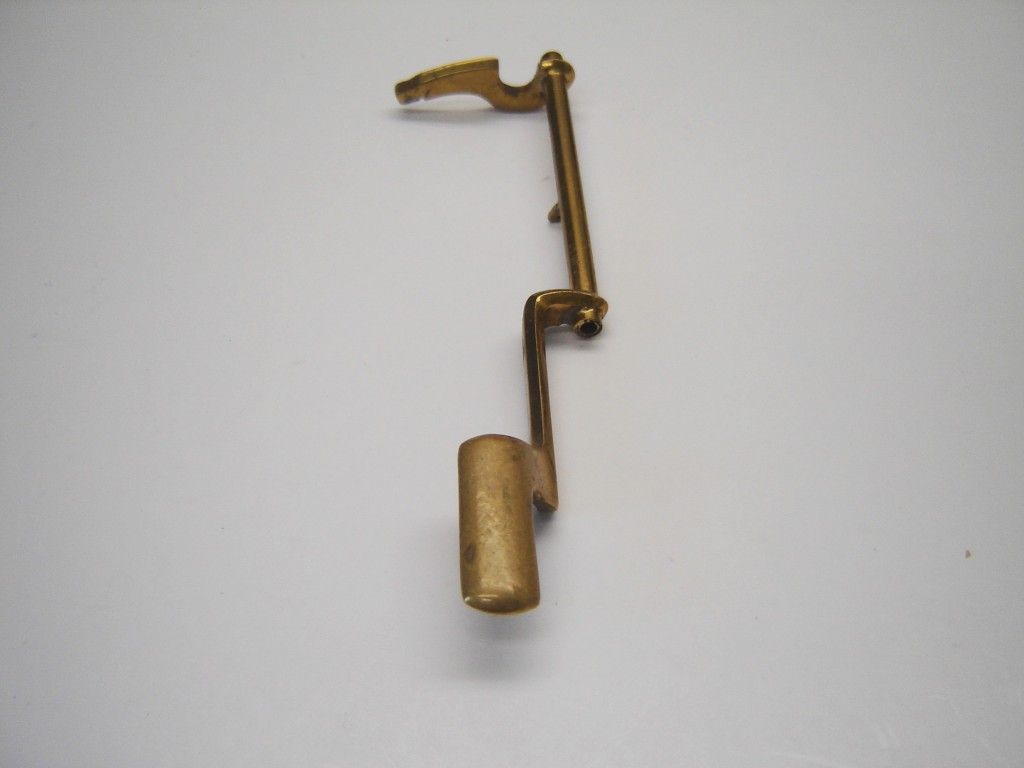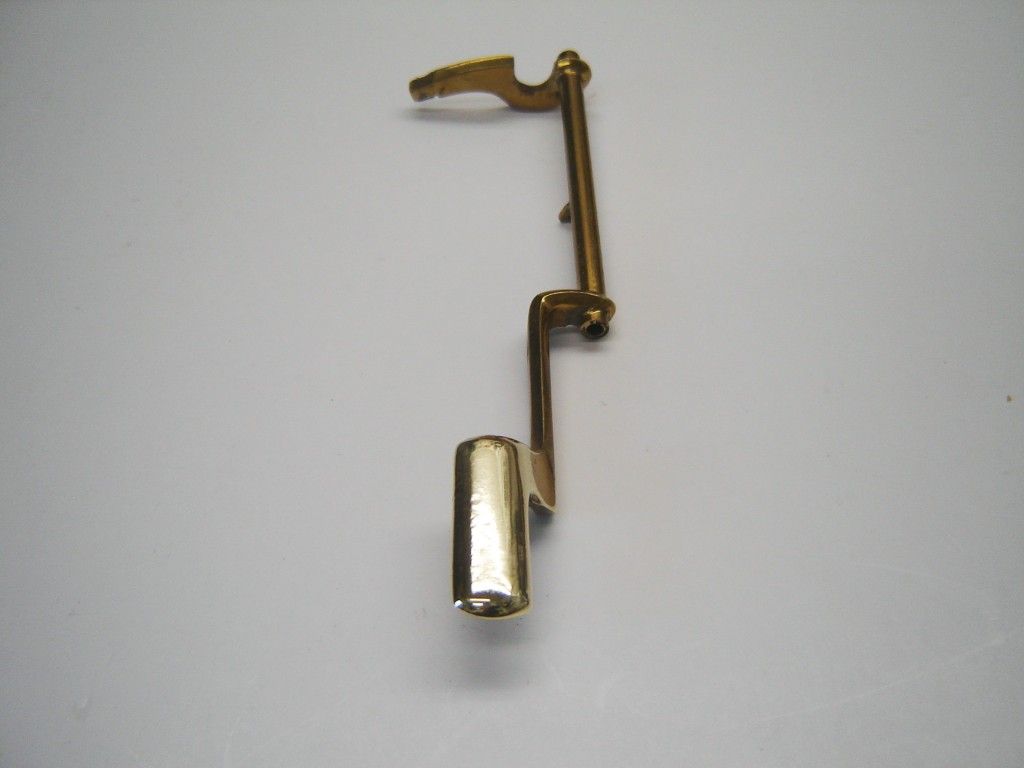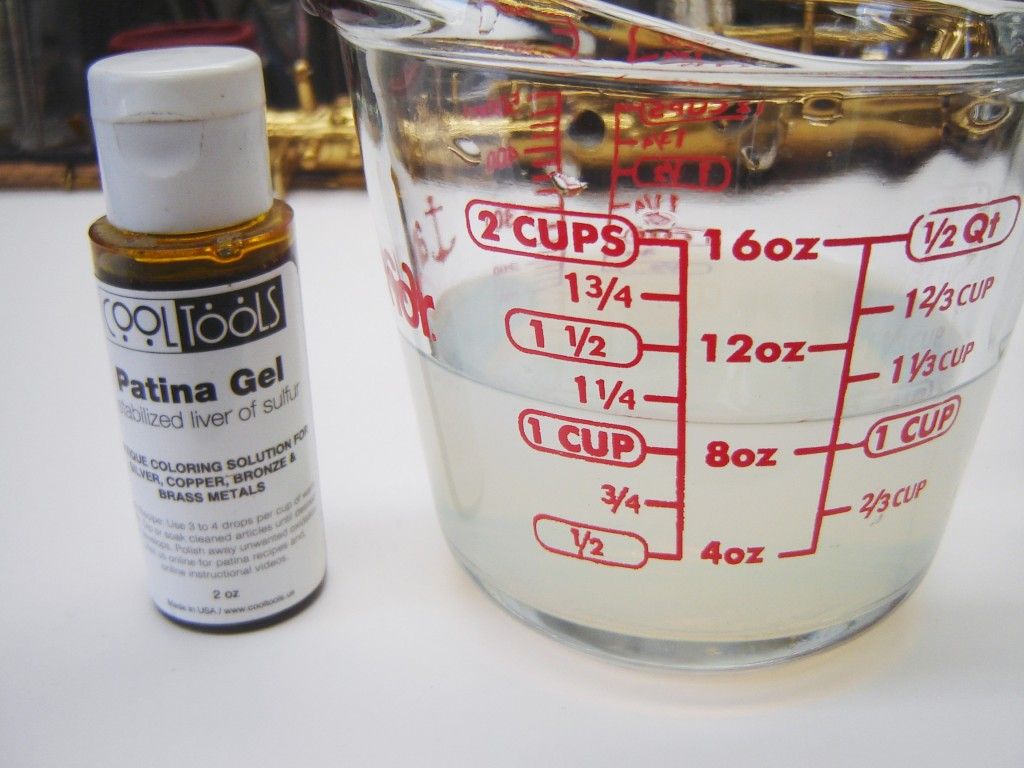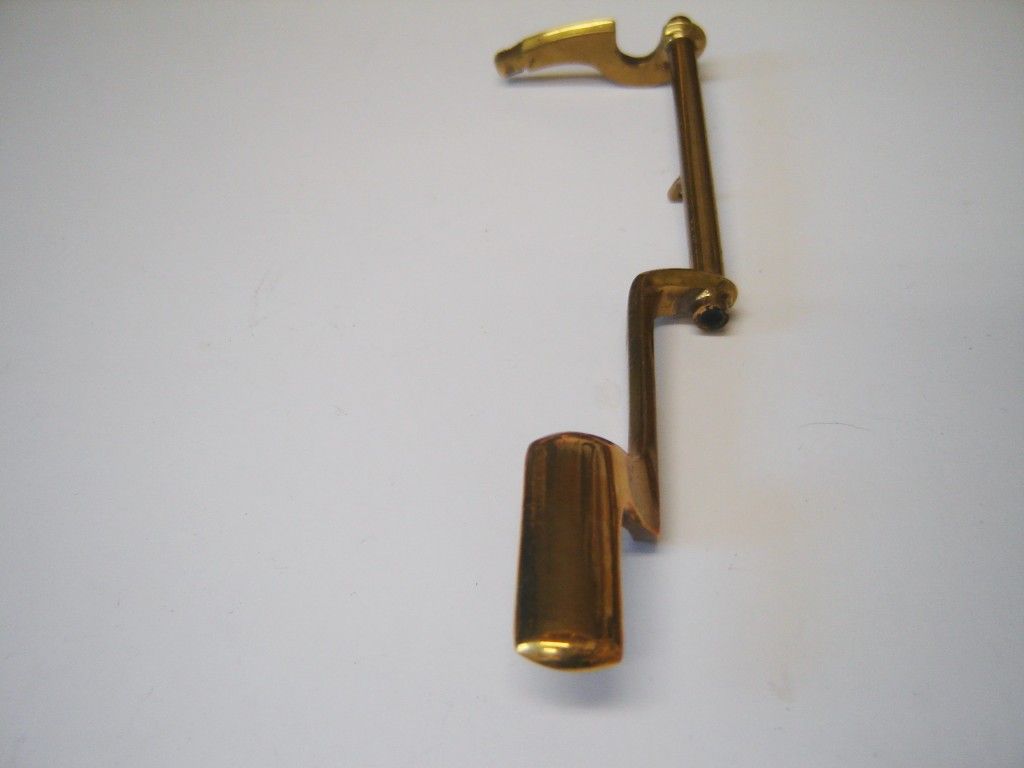When repairing and restoring vintage saxophones, one of the biggest challenges is trying to touchup or match the old dark gold lacquers that are so beautiful. I have spent a lot of time experimenting with adding gold dye to lacquer to achieve that effect. I have found that you can darken lacquer that much however it is extremely difficult to make it look good because as with any transparent finish with a tint, the color is thickness dependent. It is very difficult without expensive professional spray equipment to create a perfectly even thickness with each coat.
I have found an easier way by speeding up the aging of the brass using a chemical called "Liver of Sulphur". You may remember it in high school chemistry as the one with the rotten egg smell. You know the one that was poured into the heaters in the girl's locker room, not that I ever did that prank myself.
The first photo shows a 6M Bb side key that has the lacquer worn off the touchpiece.

The second photo shows the key after the tarnished area was polished using MAAS polish. The polished area of the brass turns bright and shiny, but does not match the rest of the key.

The next picture shows the Liver of Sulphur product and one cup of warm water in a measuring cup with 4 drops of the chemical added.

The last photo shows the key after being immersed in the liquid for just 45 seconds.

The above was just a demonstration to show how quickly and dramatically the chemical change takes place. In the real world one needs to remove the key before the desired tint is achieved, soak the key in a solution of baking soda to neutralize the sulphur in the surface, and wait 24 hours. The process continues after the part has been removed from the chemical and the brass continues to darken a bit more. After 24 hours it is stable, and at that point you can add a quick coat of clear lacquer and have a fairly good looking key. If the color change goes too far, you simply polish it off and start over.
When I find the time I will show the effects of this and other patina chemicals on brass saxophone keys taking close up photographs at regular time intervals.
I have found an easier way by speeding up the aging of the brass using a chemical called "Liver of Sulphur". You may remember it in high school chemistry as the one with the rotten egg smell. You know the one that was poured into the heaters in the girl's locker room, not that I ever did that prank myself.
The first photo shows a 6M Bb side key that has the lacquer worn off the touchpiece.

The second photo shows the key after the tarnished area was polished using MAAS polish. The polished area of the brass turns bright and shiny, but does not match the rest of the key.

The next picture shows the Liver of Sulphur product and one cup of warm water in a measuring cup with 4 drops of the chemical added.

The last photo shows the key after being immersed in the liquid for just 45 seconds.

The above was just a demonstration to show how quickly and dramatically the chemical change takes place. In the real world one needs to remove the key before the desired tint is achieved, soak the key in a solution of baking soda to neutralize the sulphur in the surface, and wait 24 hours. The process continues after the part has been removed from the chemical and the brass continues to darken a bit more. After 24 hours it is stable, and at that point you can add a quick coat of clear lacquer and have a fairly good looking key. If the color change goes too far, you simply polish it off and start over.
When I find the time I will show the effects of this and other patina chemicals on brass saxophone keys taking close up photographs at regular time intervals.
